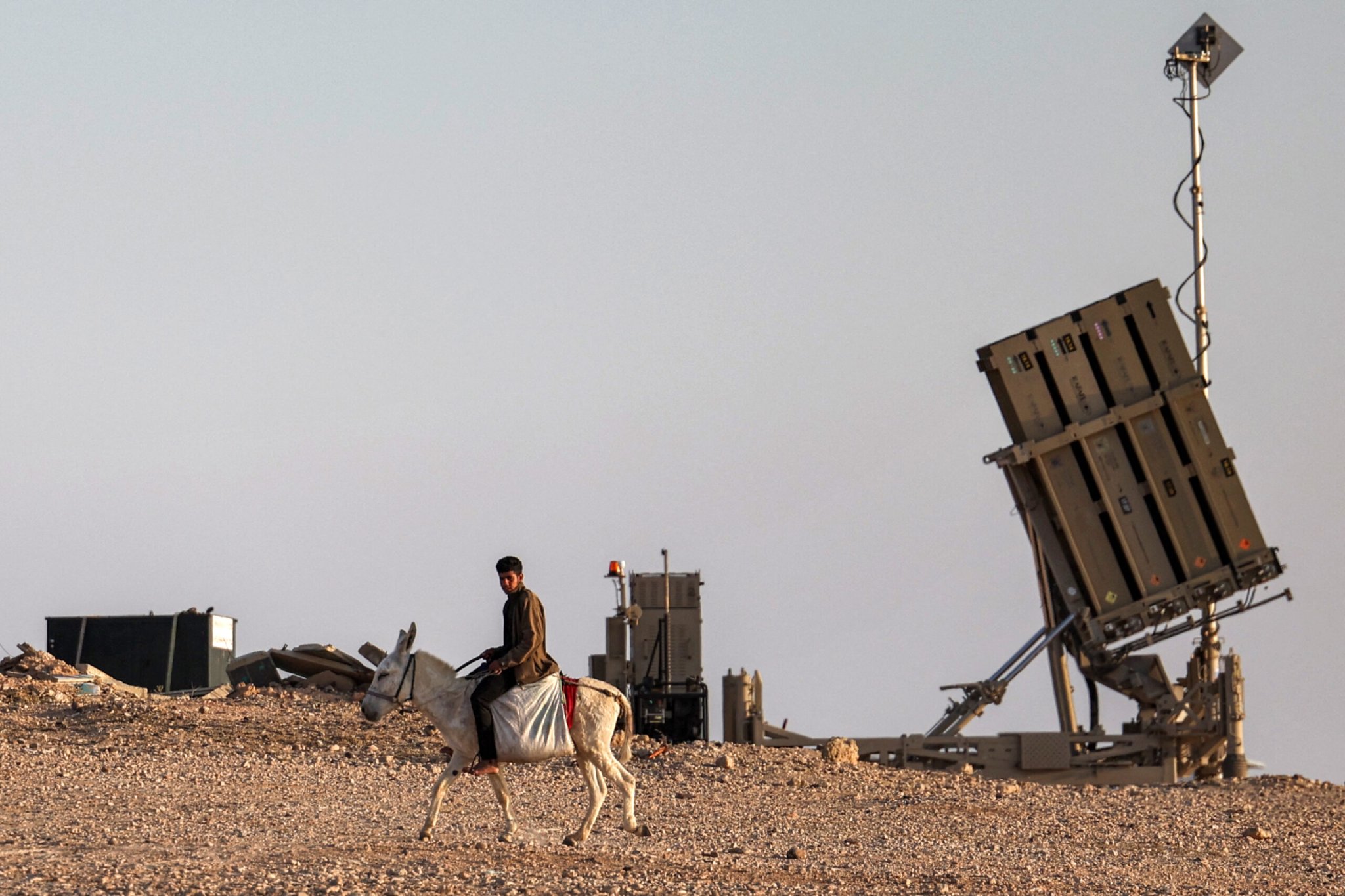

The U.S. Air Force, Navy and Army all took part in the defense of Israel on Saturday night, helping the country and partner forces intercept 99% of the more than 300 drones and missiles fired by Iran and its allies toward Israel.
The attack on Saturday night saw Iran and its partners in Iraq, Syria and Yemen launch more than 100 drones, as well as more than 100 medium range ballistic missiles and more than 30 cruise missiles toward Israeli territory. American, British, French and Jordanian forces worked with Israel to stop the attack before the munitions hit Israel. Elements from the U.S. Army, Navy and Air Force all participated in the operation, taking out several ballistic missiles and dozens of one-way attack drones in the skies in what officials described as a “multi-hour engagement.”
An Iranian official said that the operation was carried out by the Islamic Revolutionary Guards (IRGC), and called it limited and “successful” despite almost all munitions being taken out before arriving at their target.
The Navy destroyers the USS Arleigh Burke and USS Carney, currently operating in the eastern Mediterranean Sea, shot down 4-6 ballistic missiles. Additionally, a U.S. Army Patriot missile battery crew intercepted another ballistic missile near Erbil in Iraqi Kurdistan. Officials said that the missile was on a path toward Israel and not toward American forces in Iraq. Additionally, American ships operating in the waters around Yemen — which have been focused on stopping drones and missiles fired at ships in the Red Sea and Gulf of Aden for months — destroyed a ballistic missile on the launch pad used by the Houthi movement and intercepted several drones launched toward Israel.
Subscribe to Task & Purpose Today. Get the latest military news and culture in your inbox daily.
In the skies, fighter jets from the U.S. Air Force’s 494th Fighter Squadron and 335th Fighter Squadron shot down more than 70 Iranian drones in the night. Officials did not say how many jets from the two squadrons took part. Both units use F-15E fighter jets. After the operation, President Joe Biden spoke with members of both squadrons to commend them for their actions.
The majority of the other ballistic missiles were destroyed by Israel’s Arrow missile defense system.
The successful interception operation came after 10 days of preparation and coordination by the U.S. and regional partners, officials said, and after days of the U.S. warning of a potential Iranian attack on Israel. The more than 300 munitions was on the “high end” of what the U.S. expected Iran to fire, according to defense and administration officials who spoke to reporters on Sunday. They added that Iran’s intent in the strike was to “destroy and cause casualties.” As of press time the only reported injury was to a seven-year-old girl from a Bedouin community inside Israel.
The attack on Israel came almost two weeks after Israel fired missiles at Iran’s diplomatic compound in Damascus, Syria, killing 12 people including two IRGC generals. Israel denies responsibility.
Iranian-backed groups have been attacking American forces and installations since the outbreak of the Israel-Gaza war in October. Alongside Houthi attacks on ships in the Red Sea, Iraqi militias as well as other forces have fired on U.S. positions in Syria, Iraq and Jordan, killing three and injuring dozens more.
U.S. officials stressed repeatedly that the U.S. is not seeking a wider regional conflict in the Middle East.
The latest on Task & Purpose
- Former Army base warns of grenades on local trails
- ‘Black Hawk Down’ Ranger veteran awarded Silver Star
- The Air Force’s new $60 million Special Warfare center honors a fallen pararescueman
- Former Air National Guardsman may have defected to Russia
- Marine battalion commander fired for “loss of trust and confidence”
